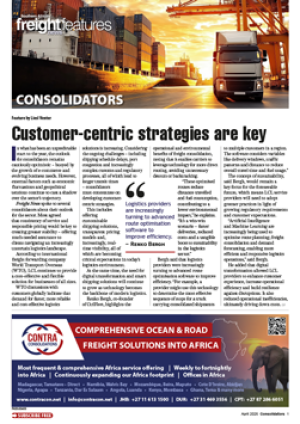Tanzania’s mining sector is a critical contributor to the country’s economy, accounting for approximately 10% of GDP, with gold remaining the dominant commodity. However, new opportunities are emerging, particularly in nickel, graphite and gas, positioning the country as a key player in regional and global resource markets.Abou Massinda, a mining and energy expert at Standard Bank Tanzania, notes that the country is at a crucial juncture. “Prospects have shifted, and while it is still early days, gold remains Tanzania’s main export. However, we are closely monitoring the development of a major nickel project spearheaded by BHP, valued at $1.4 billion. This project is particularly significant as it involves some of the richest and highest-quality nickel deposits in the world.”Graphite, he says, is another commodity gaining traction, with increased interest from junior mining companies investing in new sites. It is, however, the gas sector in Tanzania that presents one of the most promising avenues for economic expansion. Massinda underscores the importance of a measured approach to negotiations. “We have the deposits, and in the African context, transitioning responsibly is crucial. Tanzania is slightly behind Mozambique in this sector, but we are deliberately negotiating at a careful pace to avoid the challenges seen elsewhere on the continent. The government is working closely with key players in the sector, making sure that agreements align with the strategic interests of all parties involved.”While the majority of Tanzania’s gas production is earmarked for export, there remains a need to balance regional consumption. “At least 90% of our gas is expected to be exported, but we must carefully manage the balance between meeting off-takers’ needs and ensuring domestic and regional supply. We have sufficient deposits to remain relevant beyond 2050 and demand remains strong,” says Massinda. He points out that global energy dynamics have shifted, particularly following the Russia-Ukraine conflict, which forced European markets to return to coal. This has reinforced the importance of maintaining f lexibility in energy strategies and the demand for gas is expected to remain on an upward trajectory.Massinda highlights the significance of regional integration in resource management. “We are closely assessing regional consumption needs and how best to supply neighbouring markets. For instance, there are plans to extend a pipeline from Dar es Salaam to Mombasa. The complexity of these negotiations cannot be underestimated, but the opportunities are vast, and the resource base is confirmed.”A deliberate approach to project execution is a key strength for Tanzania, he argues. “While we may appear to be moving slowly, this measured pace ensures certainty in execution. Investors need assurance that when a project moves forward, it will not face unforeseen challenges. Regulatory stability has improved significantly since the major policy shifts in 2017, making Tanzania a more attractive investment destination.”He said the country’s mining sector was continuing to attract investment, despite the inherent volatility of commodity markets. “Gold prices, for example, f luctuate significantly. Investors might start projects with gold at $2 300 per ounce, only for it to climb to $2 700, drastically altering cost structures. These opportunity costs must be factored into planning. LV

